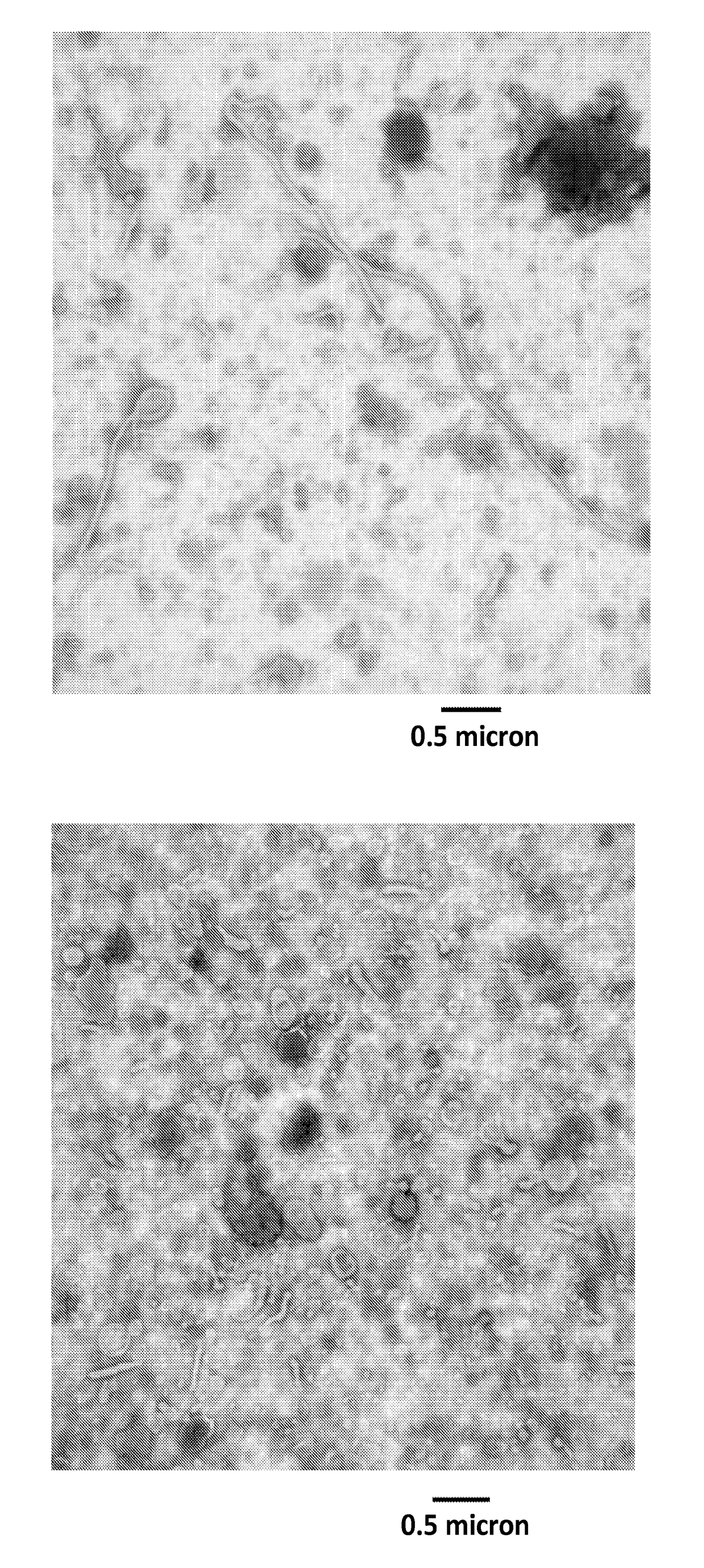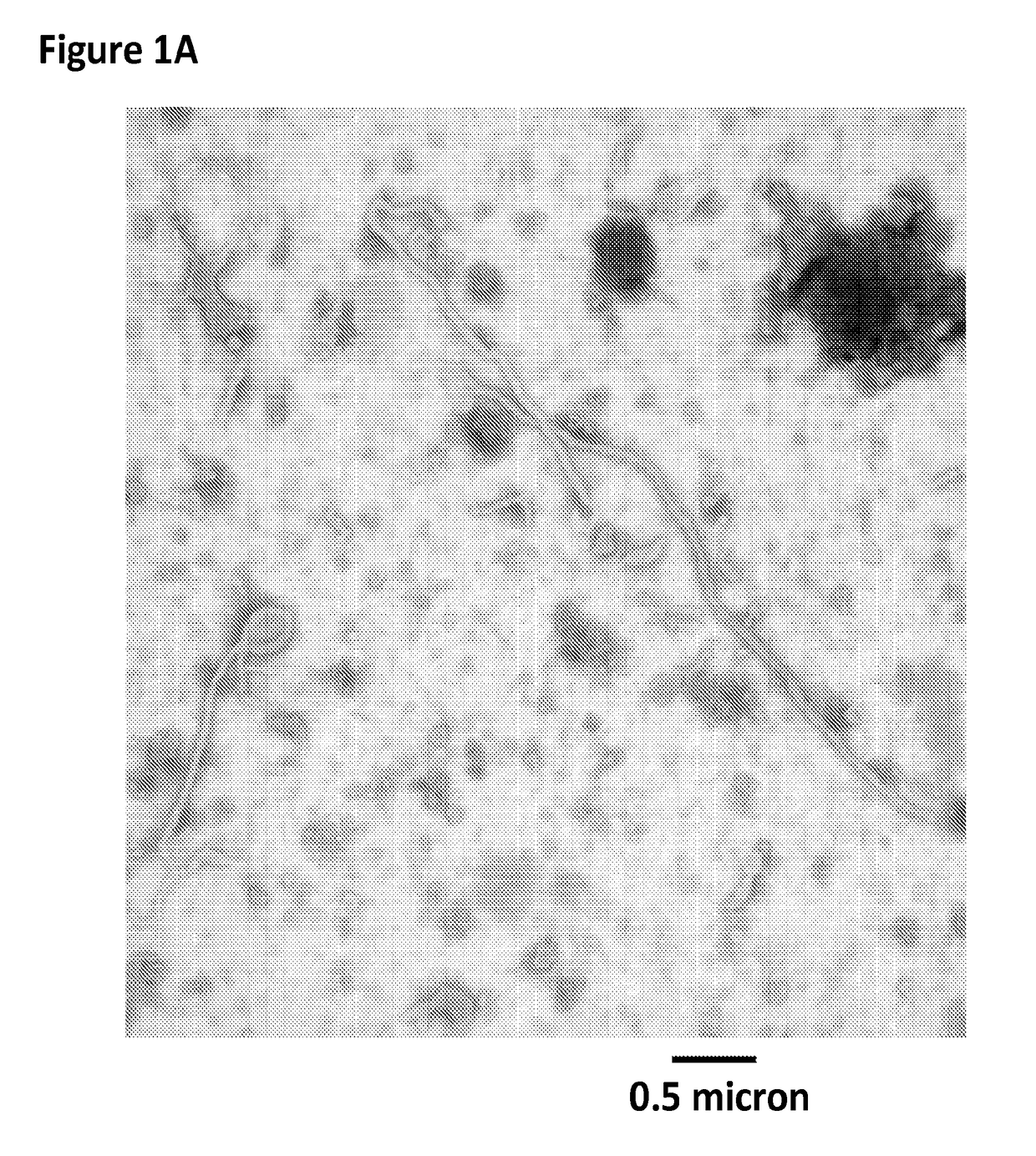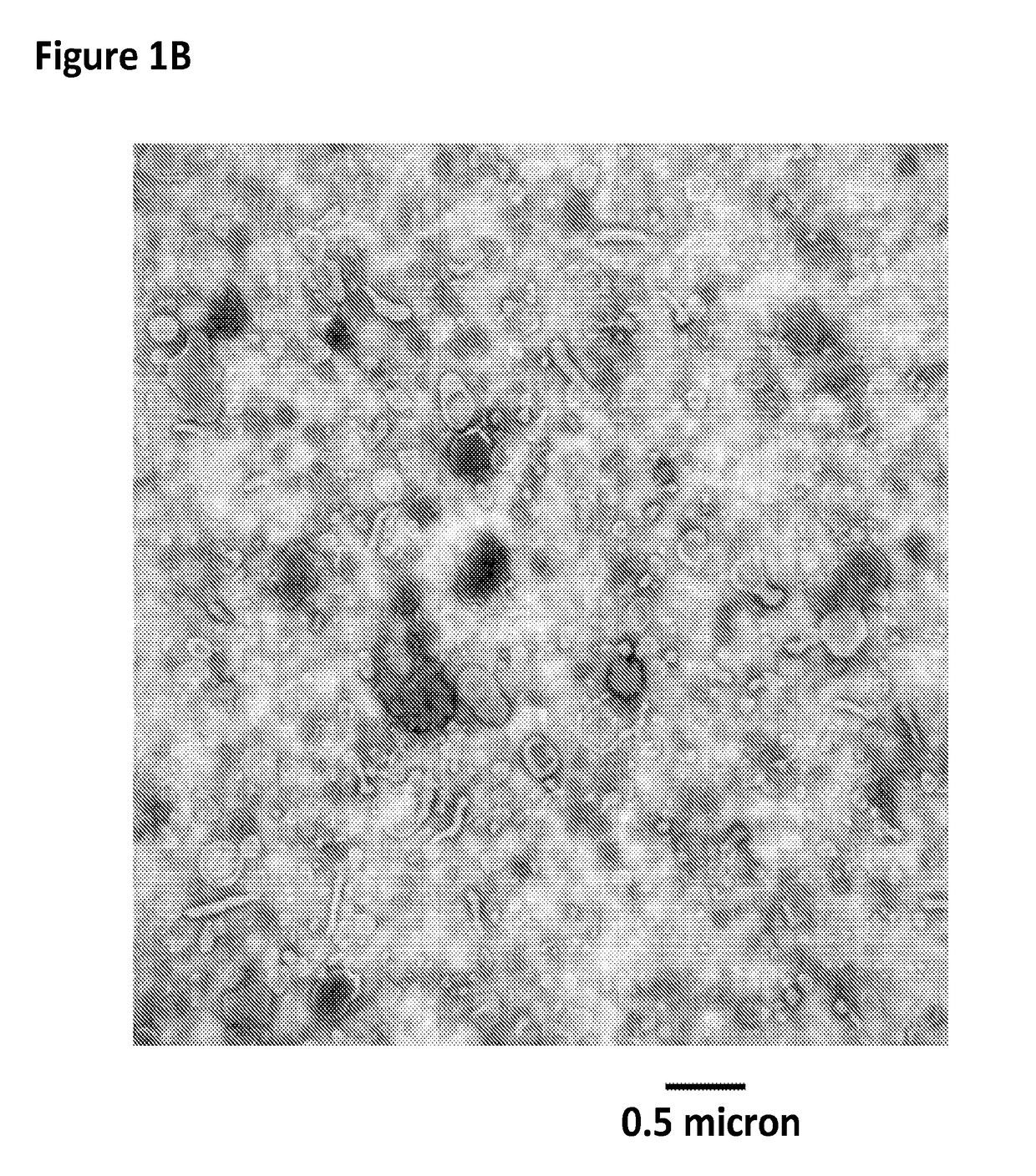Thermostable, chromatographically purified nano-vlp vaccine
a chromatographic purification and nanotechnology, applied in the field of thermostable, chromatographic purification nanovlp vaccine, can solve the problems of reducing or eliminating the effectiveness of the vaccine, and achieve the effect of retaining gp conformational integrity and the antigenic reducing or eliminating the effectiveness of the vaccine, and no significant difference in potency
- Summary
- Abstract
- Description
- Claims
- Application Information
AI Technical Summary
Benefits of technology
Problems solved by technology
Method used
Image
Examples
example 1
Impact of Sonication and Filtration on the Size Distribution of VLP
[0171]As seen in earlier analyses (Bavari et al., 2002, J Exp Med 195:593-602), electron microscopy revealed that the Ebola Zaire VLP samples contained long filaments (>1 mm) with bulbous regions that resemble Ebola virions, spherical particles similar to the head region of the virus, and some large irregular objects that might be cellular debris (FIG. 1A). Sonication of the VLP was optimized by varying the number of applied pulses until conditions were found that yielded fragments of up to ˜400 nm length (FIG. 1B.) Sonication for a total of nine pulses was adequate to fragment the VLP, but more extensive disruption for a total of 30 pulses resulted in substantial loss of the integrity of the VLP membrane. Filtration of the sonicated samples through either a 0.45 μm or 0.8 / 0.2 μm cutoff syringe filter yielded both spherical particles and fragments of filaments, and effectively removed the larger particles and aggrega...
PUM
| Property | Measurement | Unit |
|---|---|---|
| diameter | aaaaa | aaaaa |
| length | aaaaa | aaaaa |
| width | aaaaa | aaaaa |
Abstract
Description
Claims
Application Information
 Login to View More
Login to View More - R&D
- Intellectual Property
- Life Sciences
- Materials
- Tech Scout
- Unparalleled Data Quality
- Higher Quality Content
- 60% Fewer Hallucinations
Browse by: Latest US Patents, China's latest patents, Technical Efficacy Thesaurus, Application Domain, Technology Topic, Popular Technical Reports.
© 2025 PatSnap. All rights reserved.Legal|Privacy policy|Modern Slavery Act Transparency Statement|Sitemap|About US| Contact US: help@patsnap.com



